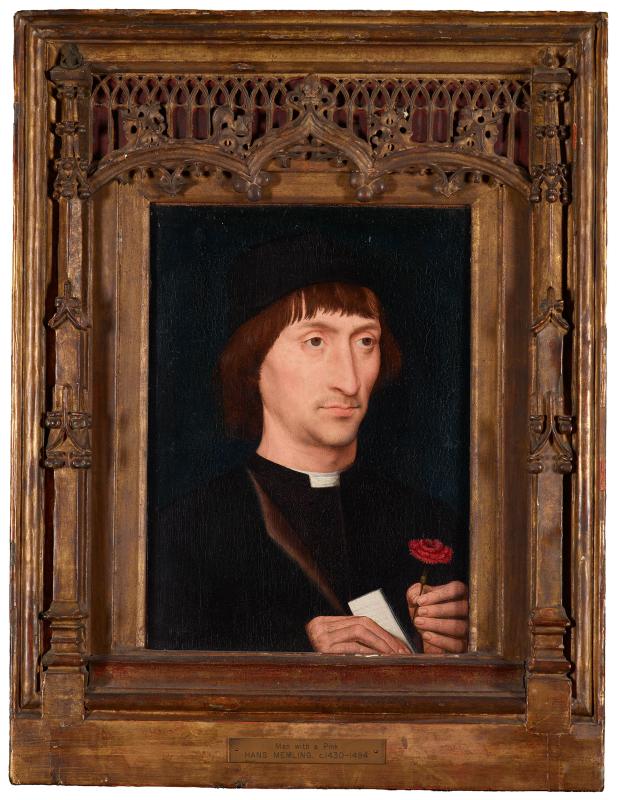Portrait of a Man with a Pink

This is one of the finest paintings Morgan acquired for his personal collection. The sitter may have been a member of the Italian merchant colony in the flourishing city of Bruges, where Memling was the leading painter. He was renowned for his skills as a portraitist, and his works were particularly preferred by foreign visitors to the city, who appreciated his meticulous realism. The pink, or carnation, in the young man's hand is a symbol of betrothal, and the letter he holds in the other may be a love letter or marriage contract, suggesting that the painting commemorates an engagement or wedding. The subject of the portrait may have been a member of the Italian merchant colony living in Bruges. The pink, or carnation, in the young man's hand may be a symbol of betrothal. The painting may therefore be one of a pair of wedding portraits.
In the 1480s, Memling adopted a more painterly brushwork than in his meticulously rendered works from around 1470. For example, where the incipient beard on the chin of the earlier Portrait of a Man (Frick Collection) is indicated virtually hair by hair, Memling here uses a series of crosshatched strokes to indicate facial stubble. The effect is no less compelling. The pink held by the man is a familiar symbol of love, and this panel was almost certainly paired with a portrait of a woman and created on the occasion of a marriage or engagement. As is the case with many portraits by Memling and his contemporaries, the pigments have changed over time, merging the man's dark clothing and the background and giving the painting a more somber aspect than the original blue-green background would have. -- Exhibition Label, from "Hans Memling: Portraiture, Piety, and a Reunited Altarpiece"